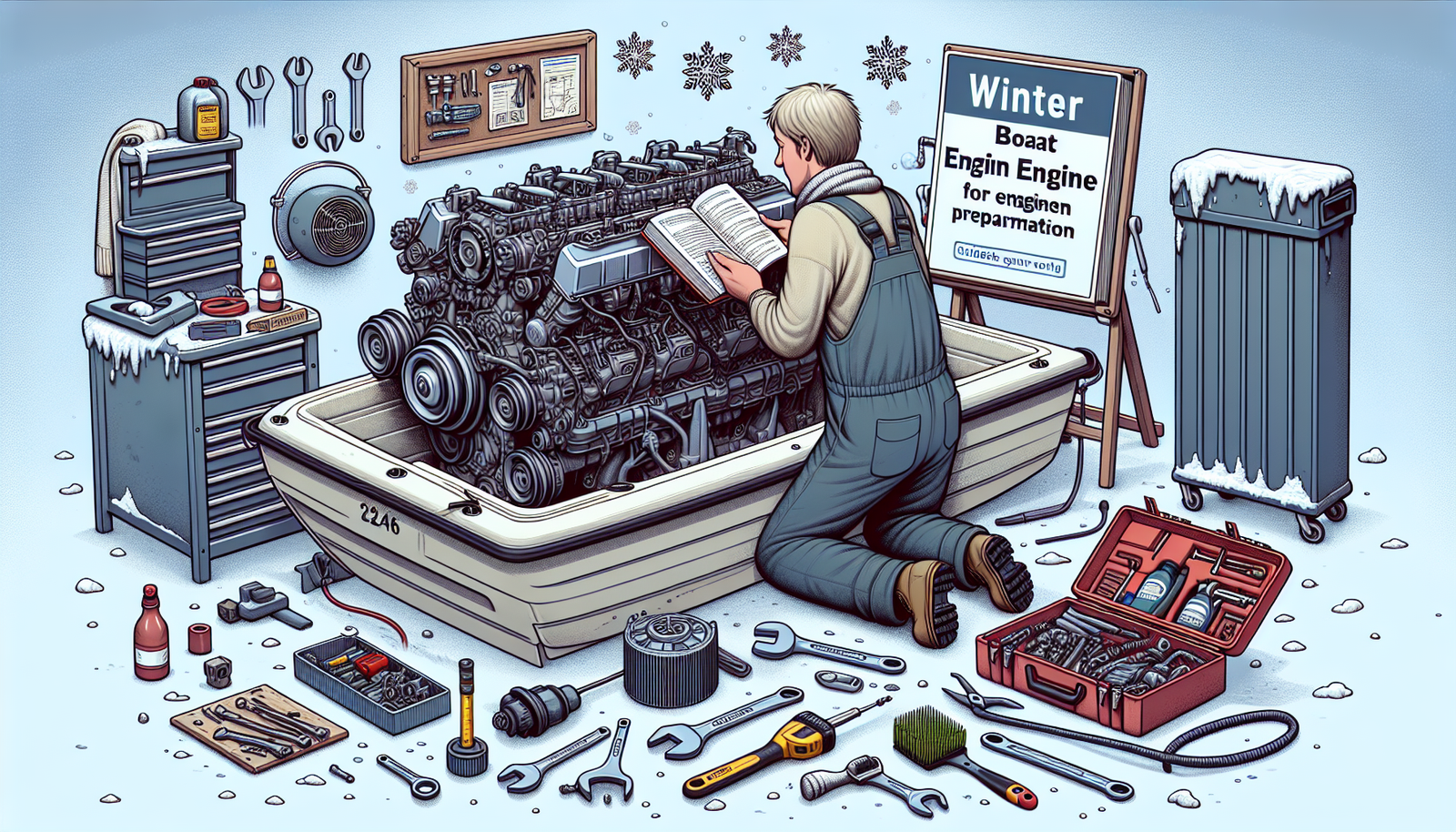Navigating the icy waters can be one of the most epic adventures you might undertake, but you have to ensure your boat can endure the cold temperature. The article, “The Best Boat Engine Winterization Practices For Cold Weather Boating“, will guide you through effective ways to winterize your boat’s engine, providing you with expert tips and techniques. It’s all about keeping your vessel’s powerhouse in optimal condition to withstand the cold, prevent damage, and ultimately extend its lifespan. Get ready to learn the ins and outs of safeguarding your boat’s engine during those freezing nautical journeys.
Understanding the Importance of Winterization
Winterization is a crucial process for maintaining the health and longevity of your boat engine. To put it simply, winterization is the process of preparing your boat to withstand the winter season effectively, especially when not in use. The process involves specialized techniques that help keep engine parts from wearing out due to the harsh cold temperatures that accompany winter.
Necessity of winterization for boat engines
You may ask why winterization is necessary for your boat engine, but the answer is rather simple—it helps your boat engine work effectively and safely. A boat engine is a complex system of mechanical parts and fluids that can be affected by severe weather conditions. Winterization basically preps your boat engine to withstand these conditions.
How cold weather affects boat engines
Cold weather is not a friend to boat engines. Low temperatures can cause engine oil to thicken, which can make your engine work harder and experience excessive wear. In extremely cold weather, water in the engine can even freeze leading to cracked blocks and damaged seals. The near-constant dampness can also breed rust and corrosion.
The potential hazards of not winterizing a boat engine
If you don’t properly winterize your boat engine, you could face numerous hazards. Unsatisfactory winterization could result in a failed engine start and even severe engine damage when the weather starts to get cold. Therefore, the risk of high repair costs and potential inconvenience of having to breach your winter hibernation for emergency engine repairs is real, hence the need for proper winterization.
Getting Prepared for the Winterizing Process
Before you start the winterization process, it is essential to get prepared. It involves having the right tools and materials for the job, ensuring that safety measures are in place, and becoming familiar with your engine manufacturer’s recommendations.
Tools and materials required for winterization
The list of tools for boat engine winterization may vary based on your boat’s specific needs, but most will include an oil extractor pump, a fuel stabilizer, hand tools such as a marine grease gun, anti-freeze, and fresh engine oil, depending on your engine model, clean rags among others.
Safety measures during winterization
Safety should be your top priority during the winterization process. This includes ensuring you’re working in a well-ventilated setting to prevent inhaling harmful fumes. Always remember to dispose of used oil, antifreeze, and other chemicals responsibly according to your local regulations.
Reviewing the boat engine manufacturer’s recommendations
Every engine is unique and may require specific winterization procedures. Therefore, it’s vital to consult your manufacturer’s manual to ensure you’re following recommended procedures.
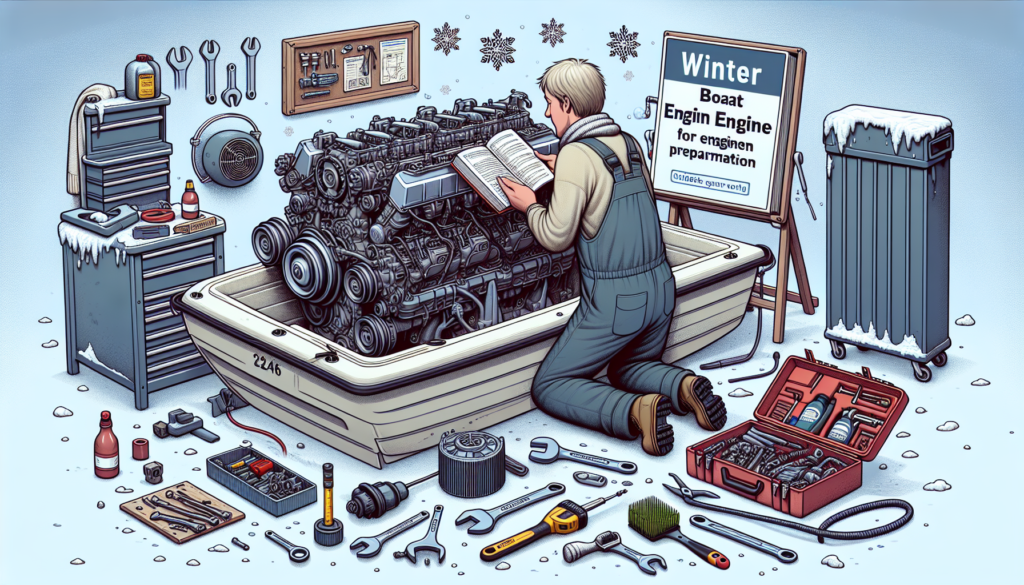
Steps for Proper Engine Draining
One of the key steps in winterizing your boat engine involves properly draining it.
How to drain the engine correctly
To drain your engine, start by disconnecting the fuel line to avoid fuel wastage. From there, you may need to run the engine on idle to allow it to drain fully.
Why engine drainage is needed
Draining your engine is essential as it removes any water that could freeze during the winter and cause damage. It also gets rid of old fuel that might contaminate the system.
Tips for ensuring comprehensive engine draining
It’s crucial to ensure your engine is adequately drained. To accomplish this, ensure all the plugs are removed, the engine is warm to allow better flow, and that you rock the boat from side to side to ensure all water is drained.
Importance of Cleaning the Engine
It’s also essential to clean your boat engine as part of the winterization process.
Techniques for cleaning a boat engine
Some effective ways of cleaning your boat engine include using a degreaser to remove grime and checking all fittings, clamps, and hoses for any possible damages.
Materials to avoid during engine cleaning
You should avoid using any cleaning materials that could damage your boat engine. These include abrasive cloths or pads and harsh chemical cleaners such as bleach or ammonia-based products.
Significance of a clean engine prior to winterization
A clean engine is less likely to rust or deteriorate due to the accumulation of dirt or salt. By cleaning your engine before winterizing it, you’re ensuring it’s in its best possible condition to weather the winter months.
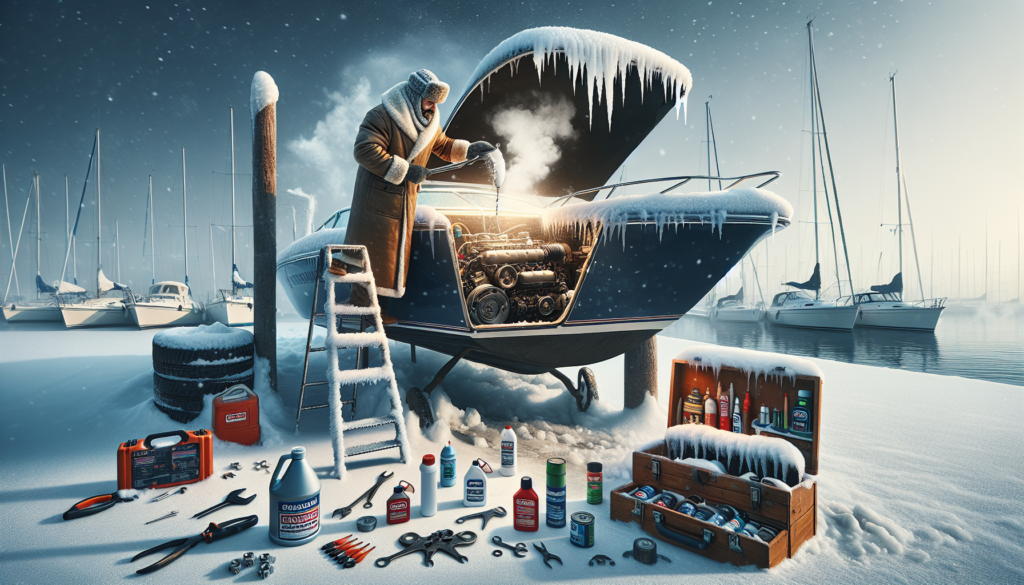
Changing the Engine Oil
Winterization won’t be complete without changing the engine oil.
Steps for changing boat engine oil
To change your boat engine oil, you’ll need an oil extractor pump. Start by warming up your engine for a few minutes before carefully inserting the pump into the dipstick hole. Then, use the pump to remove the old oil before refilling the engine with fresh oil.
Factors determining the choice of engine oil
When selecting engine oil, you need to consider factors such as your boat engine’s horsepower, size, and its manufacturer’s recommendations.
Reasons for changing oil before winter
Fresh oil works best in carrying impurities out of your engine, protecting it against rusting and corrosion. Additionally, old oil thickens over time, making it challenging to start the engine in the coming boating season.
Fuel Stabilization
Fuel stabilization is another critical winterization step.
The role of fuel stabilizers in winterization
Fuel stabilizers play the crucial role of preventing your fuel from degrading over the winter months. They do so by inhibiting the formation of gum and varnish which can clog your fuel system.
Guidelines for stabilizing boat engine fuel
To stabilize your boat engine fuel, be sure to add a fuel stabilizer to the tank, and then run the engine for a few minutes to get the stabilizer circulating throughout the fuel system.
Common mistakes to avoid during fuel stabilization
The most common mistake during fuel stabilization is failing to fill up the fuel tank. A partially filled tank can result in condensation, causing water to build up in the tank and lead to fuel contamination.
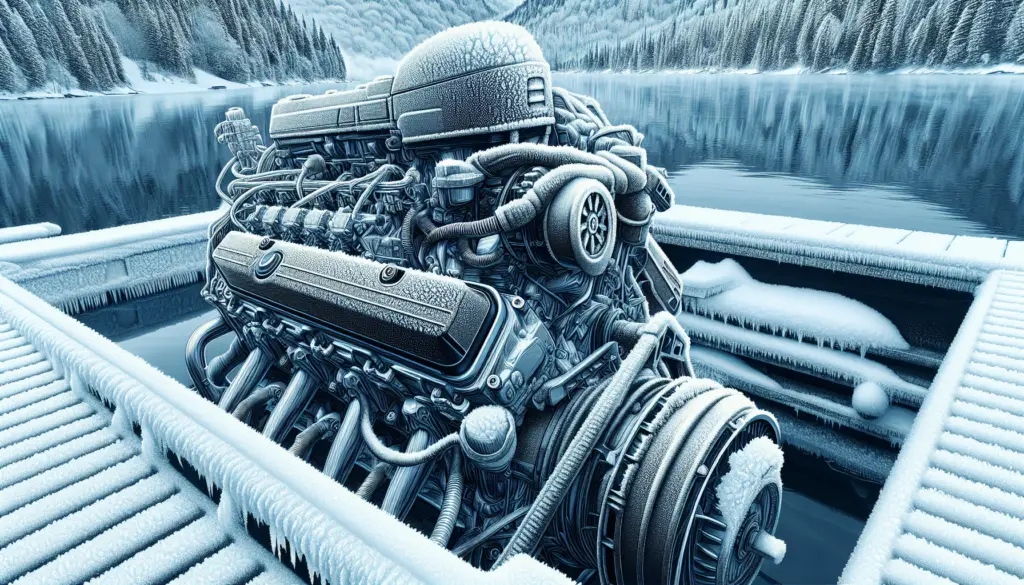
Antifreeze Application
The application of antifreeze is another important aspect of winterization.
Overview of how antifreeze protects boat engines
Antifreeze, or engine coolant, prevents the water in your engine’s cooling system from freezing, which could otherwise cause extensive damage.
Procedure for applying antifreeze
Before adding antifreeze, be sure to drain all the water from the engine. Then, use a bucket or a funnel to pour the antifreeze into the cooling system, typically through the engine’s raw water intake hose.
Choosing the right antifreeze for your boat engine
There are many types of antifreeze on the market, but for winterization, most experts recommend a non-toxic, propylene glycol-based product that is safe for the environment and provides excellent cold-weather protection.
Protecting the Battery
The battery is the heart of your boat engine and thus needs utmost protection.
Best practices for boat battery storage over winter
The best practice for boat battery storage over winter is to remove it from the boat and store it in a cool, dry place.
Methods for battery maintenance
To maintain your battery, ensure you clean it and apply a corrosion preventative to the terminals. Moreover, use a battery charger to keep it at a full charge throughout the winter.
When and how to charge your boat battery
It is vital to recharge your battery periodically throughout winter. Use a proper marine battery charger to ensure the battery is not overcharged.
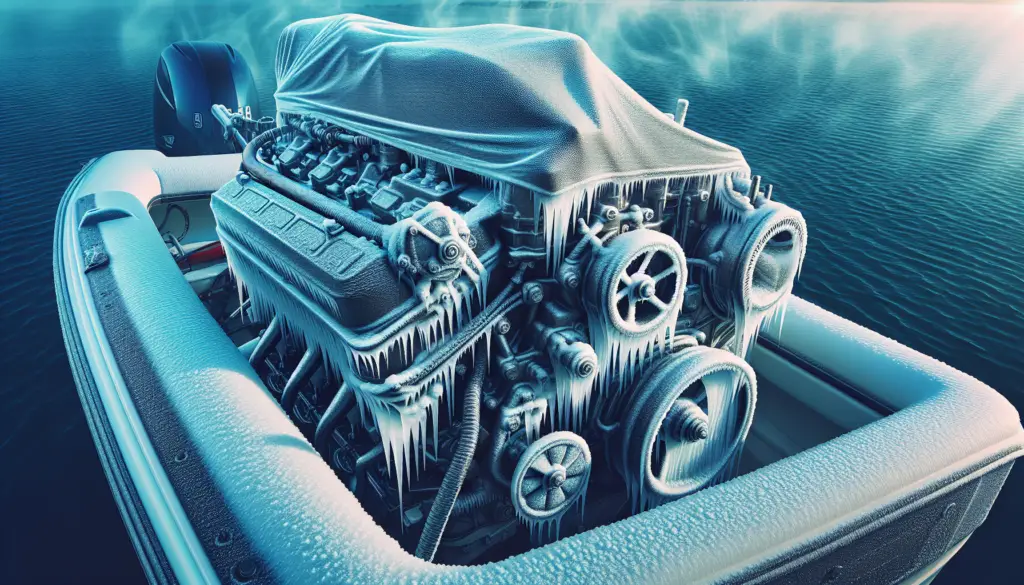
Addressing Cooling Systems
Cooling systems are integral for your boat engine and need to be addressed as part of winterization.
Significance of cooling systems during winter
The cooling systems of your engine play a vital role in ensuring that the engine does not overheat and suffer damage.
How to winterize cooling systems
To winterize your cooling systems, ensure that any water inside is drained and replaced with antifreeze. This will protect the system from freezing temperatures.
Identifying potential issues in cooling systems
Keep an eye out for potential issues such as leaks, rust, and damage to the impellers as these can have significant effects on your engine’s performance.
Regular Monitoring in Winter
Even after winterizing your boat engine, you still need to carry out regular checks throughout winter.
Why periodic checks are necessary during winter
Regular checks help you catch any issues that might arise during winter early before they escalate into bigger problems.
What aspects to focus on during these checks
During these checks, focus on aspects such as the battery charge, the state of the antifreeze, leaks, or any sign of rusting and corrosion.
How to tackle common winter-related boat engine problems
Having some basic knowledge of troubleshooting can be really handy, especially during winter. However, if you encounter an issue you can’t resolve, consider getting professional help.
In conclusion, winterizing your boat engine might take some effort and time. However, it is no doubt an investment in the longevity of your boat engine, allowing you to enjoy trouble-free cruising when the boating season resumes.

